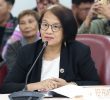1st of 2 parts
QUEZON CITY, Philippines — When typhoon Bopha (locally known as Pablo) struck several provinces in Mindanao four years ago and super Typhoon Haiyan (known locally as Yolanda) devastated those in the Visayas three years ago, killing thousands and damaging billions of pesos worth of properties, the country’s disaster mitigation programs and relief efforts was put to a tight spotlight.
Aside from corruption and neglect, disaster aid groups criticized the government for its lack of technological tool that could be used in post-disaster efforts.
Since then, government agencies now report to be working on complementing its disaster management program by constructing and developing technological platforms.
Taking a cue from typhoon Yolanda, the Philippines has embarked on a space technology project by launching a microsatellite that has the capability to produce detailed maps for rapid disaster assessment and aid disaster relief efforts.
Such idea gave birth to Diwata 1, the country’s first earth observation microsatelli te that was launched to space on March 23, 2016 at Cape Canaveral, Florida and it was deployed into low-earth orbit from the Japanese Experiment Module “Kibo” last April 27, 2016.
Joel Joseph Marciano, Jr., acting director of the Advanced Science and Technology Institute – Department of Science and Technology (DOST-ASTI), said the government invested in the development and launching of Diwata 1 under the PHL-Microsat Program with a budget of P800 million for three years.
“Diwata 1 was a product developed and assembled by researchers and engineers from University of the Philippines and DOST-ASTI under the guidance of Japanese experts from Hokkaido and Tohoku universities,” Marciano, the PHL Microsat Program Leader, said.
Marciano said that Diwata’s payloads are composed of high-end cameras developed for a specific purpose such as the high precision telescope (HPT) which is used for high-resolution imaging, the space-borne multispectral imager (SMI) for assessment of the extent of damage during disasters, and wide field camera for observing large-scale weather patterns respectively.
Sensing technology
Marciano said they have been looking for mechanisms to have sensing technology since the country is prone drastic change of the environment.
“We need to sustain the effective mechanism for a faster turn around sensing of our environment because we are very prone to change in our environment and to natural phenomenon like typhoons. We really have to be a country of sensors. We need to be a sensing country and we need to attach that in our preparations to improve our resiliency,” he said.
He said the Philippines is vulnerable to both natural calamities and disasters since it sits on the so-called Pacific Ring of Fire and the typhoon belt.
With such condition, Marciano pointed out the need to have a technology that would provide more information to complement the Philippines’ disaster risk management plan.
“We really to need to mitigate the increasing number of casualties, the damage to infrastructure and resources from natural disasters. This is a necessity since a large part of our economic activities and many of resources are focused on disaster risk management,” he said.
Radio communication in Diwata 2
The PHL Microsoft program leader also disclosed that Diwata 2, the country’s second microsatellite, is now in the works and possibly to be launched in early 2018.
When pressed to ask the difference of Diwata 1 to that of Diwata 2, Marciano said that the country’s next satellite would have a radio communication technology.
He, however, clarified that all the embedded features in Diwata 1 will also be integrated into the second microsatellite.
Marciano said that Diwata 2’s radio communication feature could be of significant help when communication provided my telecommunication companies failed in the wake of impending disasters.
For her part, Gay Jane Perez, project leader of the PHL-Microsat Remote Sensing Product Development, cited that one of the potential uses of both Diwata 1 and 2 is “to improve the country’s disaster risk management and detect agricultural growth patters.”
She said that Diwata’s sensors are capable of capturing and producing high resolution and vital images for disaster risk management and other application platforms. With Diwata, she added, it could help determine the extent of damages from disasters and at the same time monitor changes in vegetation and oceans productivity.
Diwata could also capture cloud patterns and observe atmospheric weather conditions. In general, the use of space technology such as the country’s earth observation satellite Diwata has concrete impacts on the lives of the Filipinos.
Perez said that the data provided by Diwata could be used to other applications such as “to monitor the environment, forecast weather, and provide a communication platform during emergencies and crisis to reduce disaster risks and establish a disaster-resilient country.” (davaotoday.com)










